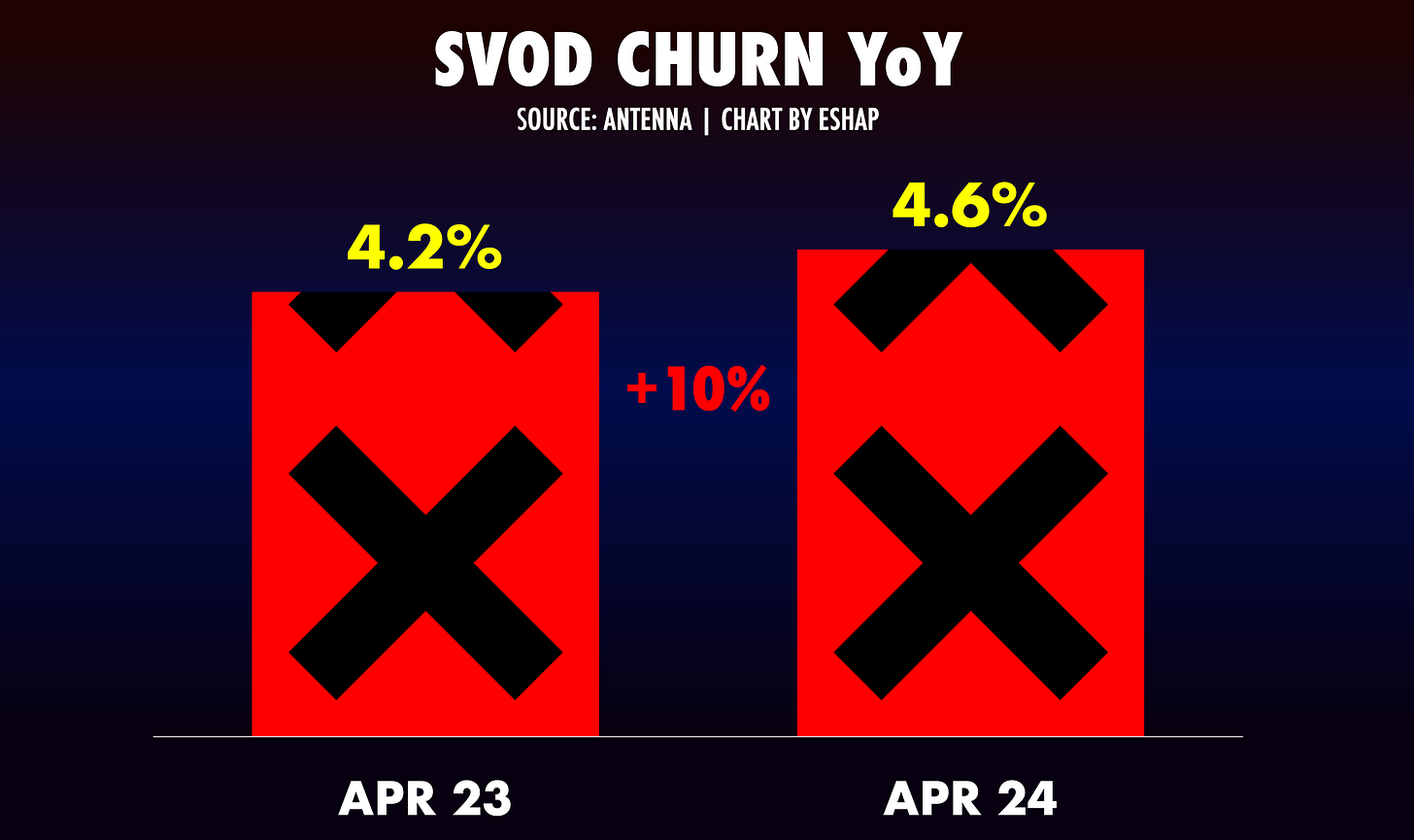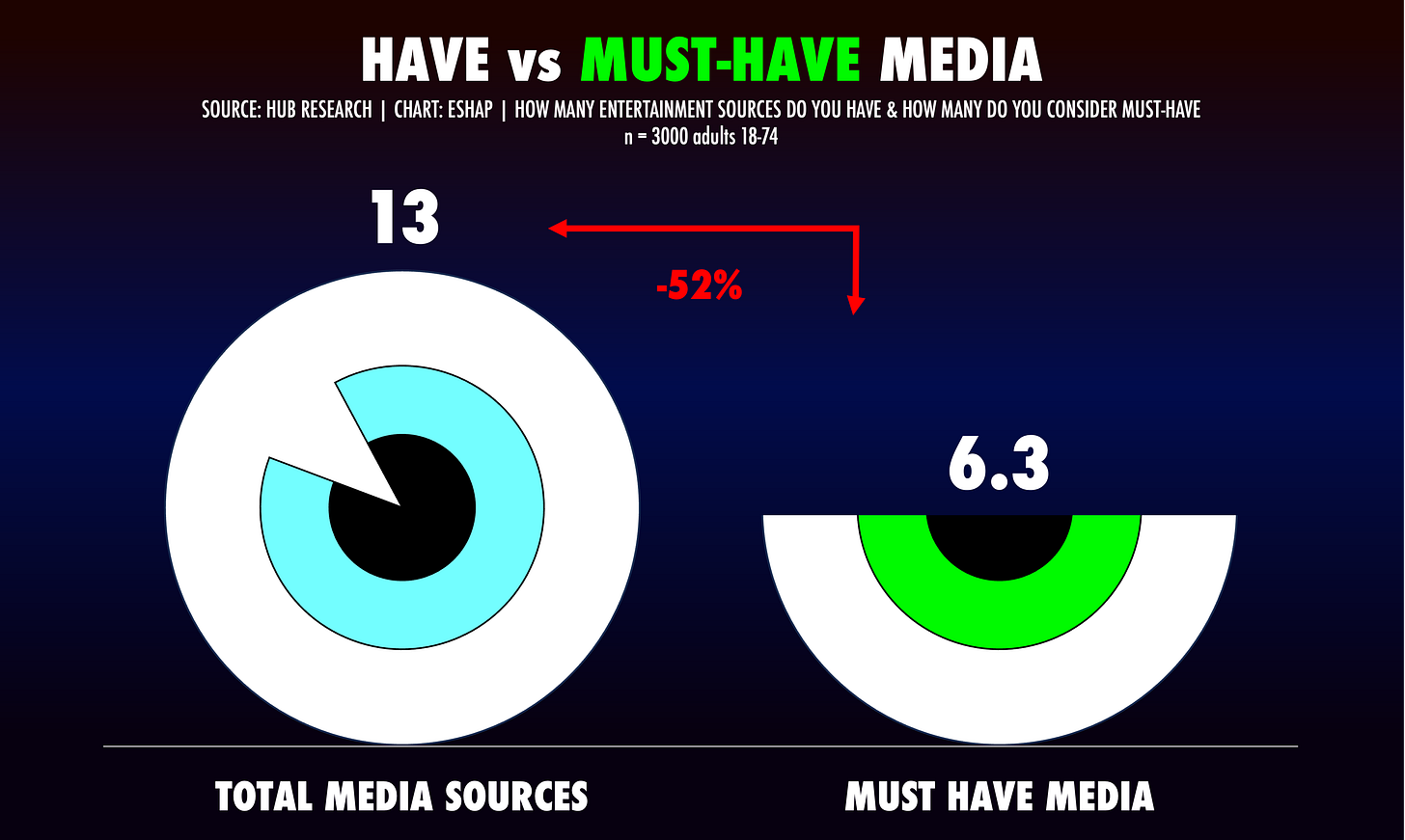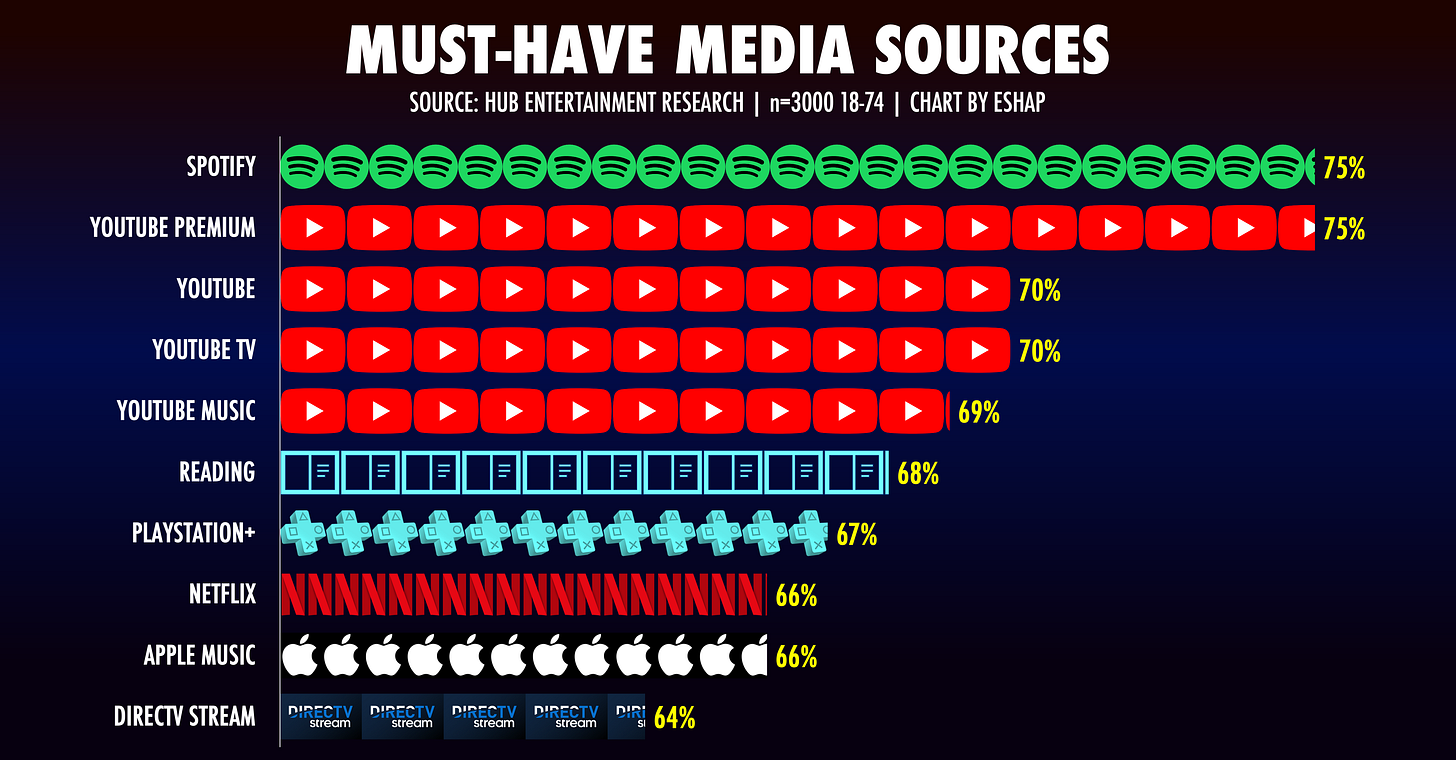Happy Summer War & Peaceniks! Let me ask: What makes you stay?
This is the question on every streaming platform’s mind these days when they contemplate their ongoing, complicated relationship with their users.
Churn is the rate at which subscribers cancel each month. Yet, the metric is not mentioned as much or as often on earnings calls or in earnings reports as one would expect, given its import. Netflix mentioned the word churn just once during their 1Q call, but not even one time in their 1Q 2024 Shareholders Letter.
Now, this could very well be because Netflix does not have a churn problem. According to Antenna, their April 2024 churn rate was an incredibly low 1.8% and their average churn over the last twelve months is just 2%. That said, I would actually like to know the churn rate for Netflix - specifically churn for its new ad tier versus its traditional ad free tier.
For many, aka most, of Netflix’s competitors in the premium streaming space, constant subscriber and viewer loss is a new existential crisis they did not face directly in the Pay TV era. The industry average churn in April 2024 is up 10% YoY.
Disco Bros is obsessed with churn, mentioning it thirteen times on their earnings call - understandable, given their SVOD-high 7.2% monthly churn. Disney pays deep attention to churn, keeping it comparatively low through bundling. Yet, they mention their cancelation rate just it once in passing on their 1Q earnings report. Meanwhile, heavy churner Paramount refused to bring it up at all in their report or on their call.
The lifetime value of a Media consumer revolves around the amount time a publisher or platform spends with them. Subscription fees, ad impressions, behavioral data, e-commerce, even the intellectual property they generate for AI licensing are all predicated on extending each user’s length of stay as much as possible. Yet, with more Media choices than at any point in human history, all competing for time and attention, keeping consumers around has never been harder.
But churn is a new problem we have solved before.
Before the cable era, there was broadcast. Channels were few, so they spoke directly to consumers, for free, selling access to eyeballs as a business model. Then cable channels exploded and became bundled in Pay TV, adding subscription revenue. This bundle became the center of the home bundle we called the Triple Play: Television, Internet, and Phone.
The Pay TV bundle was effective. The Triple Play Bundle was unbreakable. And really profitable. By the beginning of this century, the Triple Pay was the high-margin protective shell around a bloated, over-expensive, unsustainable Pay TV bundle. Then Hollywood sold its best content to Netflix. Then they mimicked Netflix’s model. Then they unwittingly unbundled their own fundamental financial core.
As streaming replaced Pay TV and mobile replaced phones; as Millennials and Gen Z started their own households; the Triple Play’s protective shell melted. Like the olden days of broadcast, channels are now left to their own devices to woo audiences - free range networks chasing eyeballs! Unlike those bygone times, channels must now acquire paying customers, retain them, re-market them, and manage them directly. This is a costly slog Netflix was built on, but one for which the traditional media horsemen were wholly unprepared.
And today, audiences not only have infinitely more sources of media than ever before, they can change or delete their channels at will with a twitch of a thumb.
This new research from Hub shows that consumers now average thirteen different entertainment outlets at any given moment. Under 35, consumers average seventeen. Yet when you press media users on which of these apps are un-cancel-able, must-haves that they could not live without - most of their media become expendable.
Importantly, for those of us operating media businesses in the User-Centric Era, precious few of the big, elite entertainment brands land at the top of the “can-not-live-without” category.
Keep reading with a 7-day free trial
Subscribe to Media War & Peace to keep reading this post and get 7 days of free access to the full post archives.








